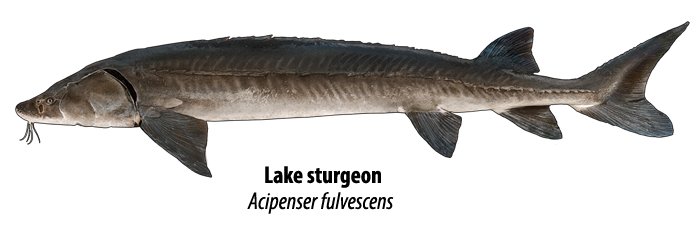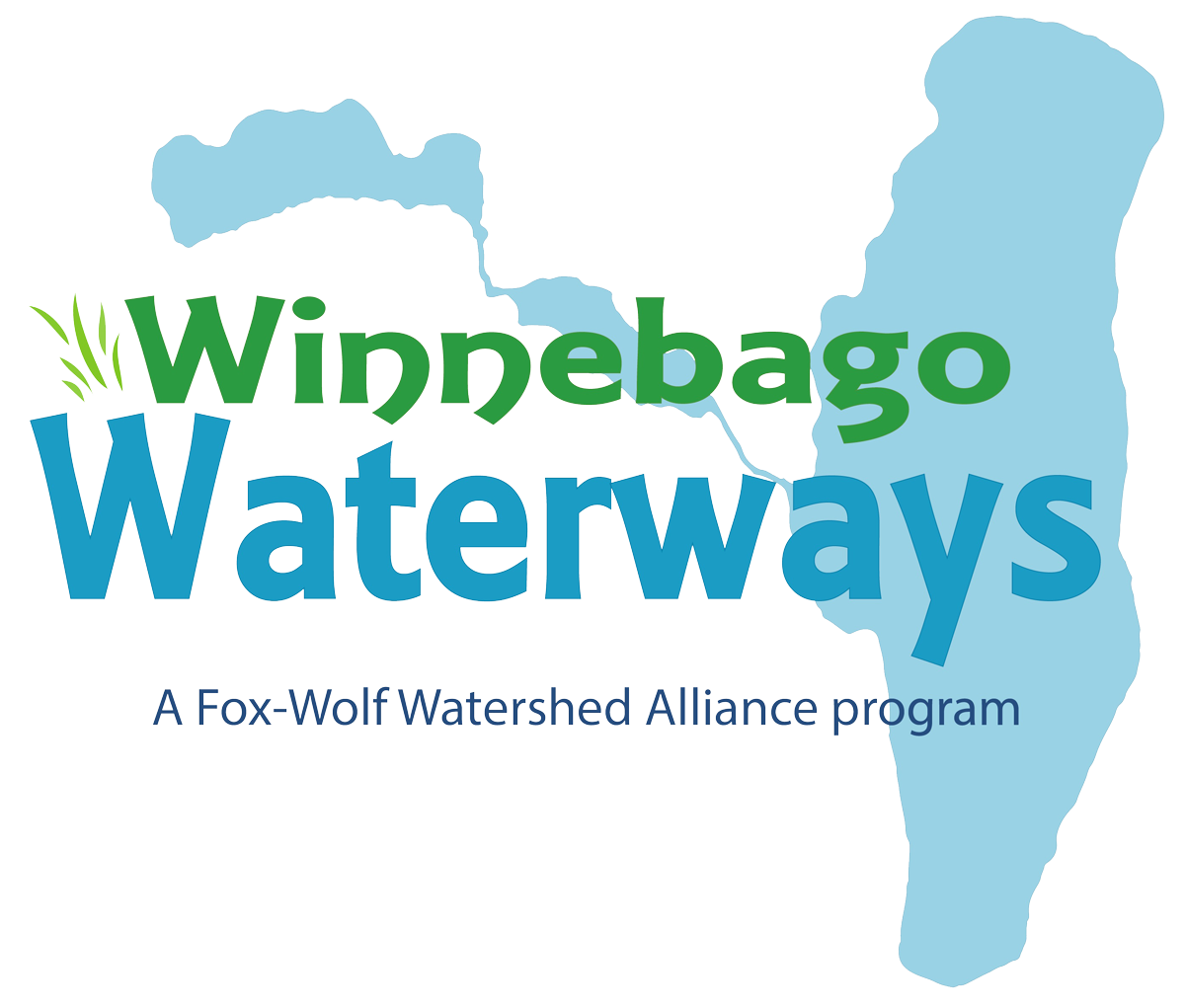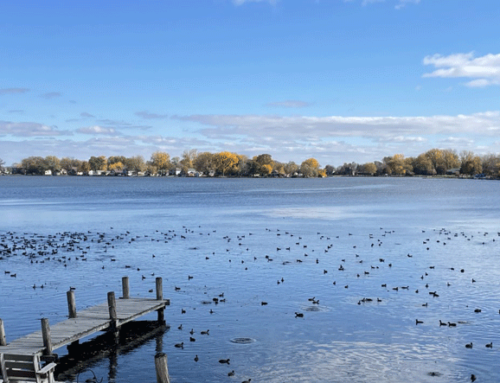This month’s species spotlight highlights a very popular and fascinating Wisconsin fish: Lake Sturgeon! Often the species referred to as just “sturgeon” in Wisconsin, lake sturgeon (Acipenser fulvescens) have other common names including freshwater sturgeon, rock sturgeon, stone sturgeon, red sturgeon, and ruddy sturgeon. The shovelnose sturgeon is the only other species of sturgeon found in Wisconsin, and there are 28 species of sturgeon world-wide.
Lake sturgeon are considered a living fossil, meaning they retain many primitive characteristics that have been lost or changed in other modern-day fish. The first appearance of Lake Sturgeon in the fossil record occurred in the Mesozoic era 100-150 million years ago. That’s around the time dinosaurs went extinct!
Lake Sturgeon

Juvenile Lake Sturgeon - Katie Reed

Lake Sturgeon-Justin Chiotti/USFWS
These fish are torpedo shaped, with a tail that has a longer upper portion than the lower. Their bodies are slate gray, olive brown or black with a milky or yellow-white underside and their coloring can change depending on age. Lake sturgeon also have sharp bony plates. The oldest lake sturgeon caught in Wisconsin was an 82-year-old sturgeon that weighed 168 lbs., caught in 1953. One caught in Ontario, Canada was 152 years old, weighed 215 lbs. and was 81 inches long – that’s over 6 feet!
Lake sturgeon eat food from the bottoms of lakes and rivers. They use sensory whiskers, called barbels, located in front of their mouth to help them find food. Lake sturgeon do not have teeth. Instead, they use their large, extendable mouth to suck up food such as macroinvertebrates including snails, crayfish, mussels, leeches and aquatic insects. Lake sturgeon may also eat small fish and eggs. When sucking up food, sturgeon also intake silt, gravel, and other bottom materials, which are then expelled through the gills while the food remains. Lake sturgeon primarily stick around lakes with extensive areas of shallow (less than 30 feet deep) and in river pools, looking for areas with lots of food.
Sturgeon spawning season is often a well-attended event, by both fish and people. During mid-April to early June, Lake Sturgeon travel upstream to spawning grounds, and you can see them up close. The timing of spawning is dependent on water temperature and water flow. They prefer to spawn in shallow, rocky areas along river banks. Female lake sturgeon do not start spawning until they are about 25 years old. Then, they only spawn once every four, five, or six years after that. Males mature around 15 years old, and most spawn every other year or even every year. Females can lay anywhere from 50,000 – 700,000 eggs per season. The eggs are quite sticky, and cling to rocks and other solid materials until they hatch. Depending on water temperature, the eggs hatch in five to eight days. Check out the DNR’s website for spawning season information and where to go to watch: https://dnr.wisconsin.gov/topic/Fishing/sturgeon/SturgeonSpawning.html.
The Winnebago System has one of the largest self-sustaining sturgeon populations in the world. Protecting habitat is key to maintaining the conditions for lake sturgeon survival. They require stable, moderate levels of oxygen to live, and polluted waters have less available oxygen. Changes in habitat and changes in water flow may reduce the number of bottom organisms that the lake sturgeon eat, and interfere with sturgeon egg hatching. Lake sturgeon were also extensively fished in the recent past, and the Great Lakes sturgeon fishery populations were reduced to a level that they have not recovered from. The lake sturgeon is listed as a rare species in the United States. The Wisconsin DNR closely regulates lake sturgeon fishing in order to maintain our historic species.
P.S. Please send us your sturgeon photos for us to showcase in our next Winnebago Waterways Newsletter! Be sure to include the names of people in the photo, location, and photo credit. Thank you in advance!
Sources:
Photo Sources:
- Lake Sturgeon – WDNR
- Juvenile Lake Sturgeon – Katie Reed
- Lake Sturgeon Detroit Alpena FWCO – Justin Chiotti/USFWS
Article written by Katie Reed, Winnebago Waterways Coordinator: katherine@fwwa.org
Winnebago Waterways is a Fox-Wolf Watershed Alliance recovery initiative. Contact us at wwinfo@fwwa.org








